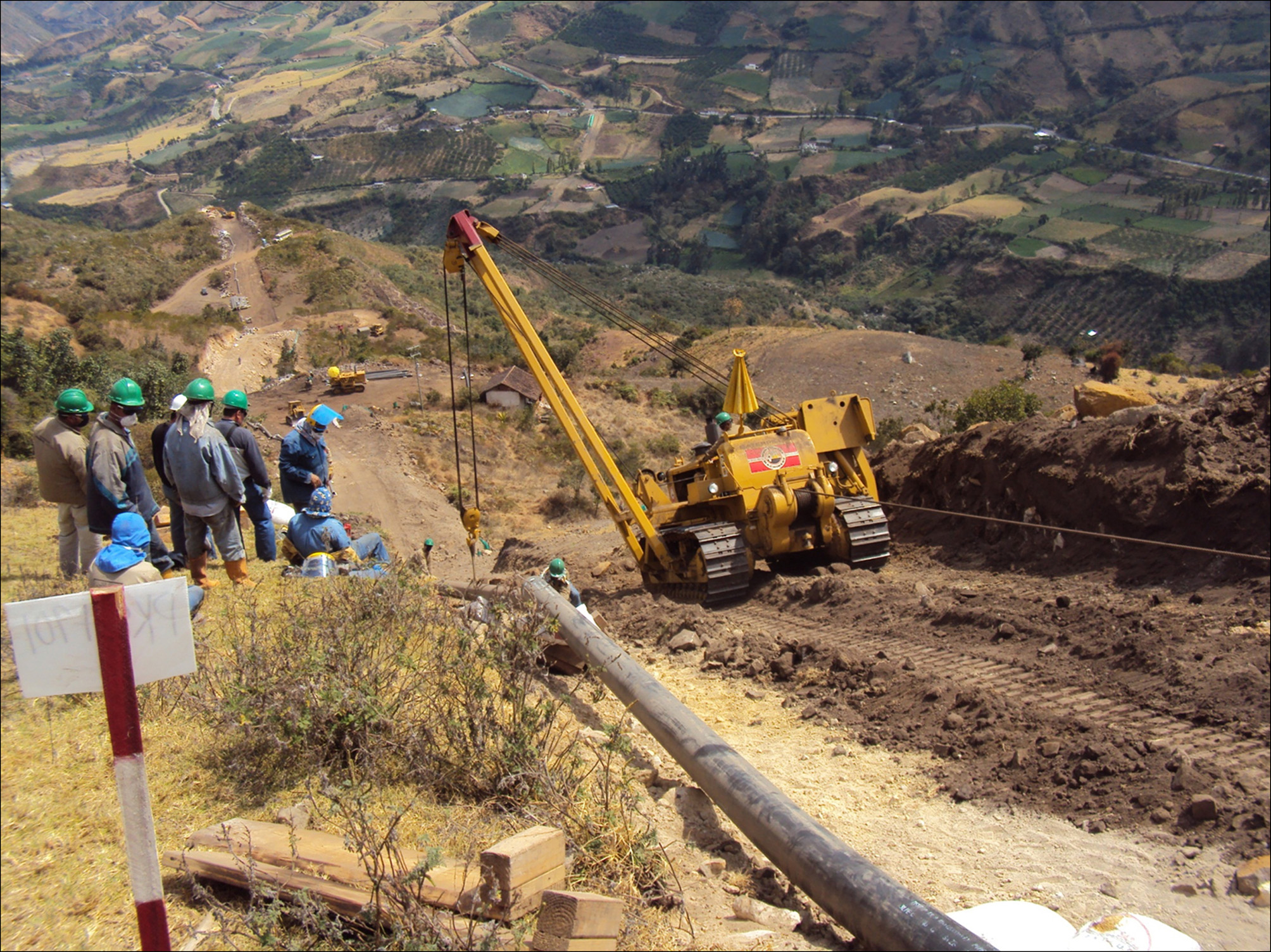October 2011, Vol. 238 No. 10
Features
Mountainous Terrain Challenges Workers Building Gas Pipeline In Colombia

Construction of the $160 million Gibraltar-Bucaramanga gas pipeline in Colombia was recently completed. Gas Natural E.S.P. entered into an agreement with TransOriente E.S.P. for construction of the Gibraltar-Bucaramanga gas pipeline that will transport gas from the Gibraltar field to Bucaramanga Refinery where it will connect with Colombia’s national gas transport system.
Construction of the pipeline began Sept. 1, 2009 and was completed Aug. 18, 2011. The project is designed to help meet the growing demand for natural gas in cities located in the northern part of the country where rationing has increased in order to meet the demand for vehicular gas in the industrial and domestic sectors.
The pipeline covers a distance of 180 km and has a diameter of 12 inches. It is built of high-pressure stainless steel pipe and will have a maximum capacity of 45 MMcf/d. The route goes through a mountainous area that reaches altitudes of 3,620 meters above sea level. Along the route, a distance of 32 km has steep inclines, which required bending the pipe to angles of up to 25 degrees to accommodate the difficult terrain.
Weather conditions also posed an obstacle, considering that temperatures ranged from -10°C in the El Picacho area to 38°C at the Gibraltar pumping station. Heavy rains during construction also proved challenging since 90% of the route goes through mountainous areas and required 85% of pipes to be bent to adapt to the area geography. This resulted in delays in welding.
From a geologic perspective, the ground is mostly stable and rocky, making excavation and installation of the pipe difficult. In some areas it became necessary to use explosives to excavate the rock in order to proceed with burying the pipe. The rock formations are mainly sandstone, clay and a mix of both with large boulders in some locations.
In some of the narrower valleys there were deposits of unstable inorganic materials, dragged by the flow of currents and originating from the mountain sides. Some of these obstructions were as much as a meter thick. The pipeline also traverses through both urban and suburban areas which presented difficulties during construction.
The construction contractor had to use nearly 360 pieces of heavy equipment, among them Cat D6D, D6H, D69 and D8R bulldozers, hydraulic lift trucks and Superior Manufacturing SPB pipe-bending machines. Tractor trailers, sand-blasting equipment, telescopic lifts, pipe carriers, pipe welders and side-booms were also required.
To transport the pipe from the warehouse to the right-of-way, semi trailers were used to travel secondary and tertiary roads. Once on location, the trailers were unloaded with the assistance of backhoes or side booms. Pipe carriers were used to carry four to eight pipe joints at a time.
In mountainous locations where inclines of up to 70 degrees were encountered, it was necessary to haul some of the construction equipment up the mountain using other machinery, generally a bulldozer equipped with a motorized winch. In the Chitaga and Tane areas a zip line was built to move the pipe to location and overcome the difficulties presented by the geographical and climatic conditions of the area. [inline:]

According to company officials, all technical requirements and environmental regulations were carefully followed in the process of digging the trench, laying the pipe in the ditch and backfilling the trench. These environmental specifications required that the pipe be laid sequentially and continuously, and did not allow for uncovered pits for extended periods.
The route of the gas pipeline required 164 aerial crossings: 13 open air, 91 across rivers and 60 across roads. In the case of the crossings of small rivers and secondary roads, the concrete-coated pipe was buried at a depth of 2.5 meters below the riverbed or road. When crossing main roads it was opted to dig deeper trenches at either end of the crossing and tunnel two meters below the road to prevent damages to the surfaces of the road above.
For the open air crossings of the Rio Negro, Ermitaños I and II, Chimita, Cherela, Peluco, Chipara, La Cañada and Mataperros, where the topography did not permit tunneling, the pipeline was suspended on supports (bridges or metal towers).

Pipe for the project was provided by Corpac Steel Products and the Colombian company Tubomar S.A., both direct distributors for Anshan Zhongyou Tipo Pipe & Tubing Co., Ltd., and Pan Yu Chu Kong Steel Pipe Co. Ltd (PCK) of China, which manufactured and coated the pipe for the project.
The pipe used was Carbon API 5L, Grade X60 (resistant up to 60,000 psi SMYS). Prior to shipping the pipe was coated in the factory with FBE, adhesive and polyethylene to provide protection from corrosion and damage during transportation and installation. The coating was applied according to Canadian standards Z245.20 y Z245.21.





Comments